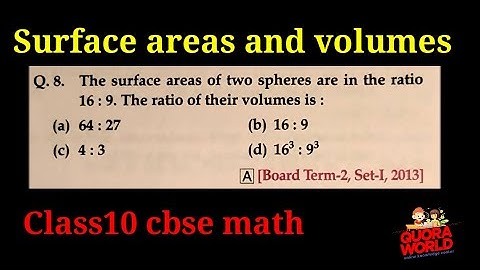By orienting the reacting particles in such a way that efficient collisions are more possible, a catalyst may minimise the activation energy for a reaction by: To form an intermediate that requires lower energy to form the product, interacting with the reactants. When an enzyme binds to its substrate, we realise that it decreases the reaction’s activation energy, causing it to happen quicker. By bending substrate molecules in a way that promotes bond-breaking, the enzyme-substrate complex can also lower activation energy, helping to enter the transition state. For a drop in temperature, the reaction rate reduces. Without being consumed in the reaction, catalysts will lower the activation energy and boost the reaction rate. Differences in the reactants’ inherent structures can lead to differences in reaction rates.
Catalysts and activation energy To increase the rate of a reaction you need to increase the number of successful collisions. One possible way of doing this is to provide an alternative way for the reaction to happen which has a lower activation energy. In other words, to move the activation energy on the graph like this:  As before, particles which don't have enough energy at a particular time will at some time in the future gain energy from random collisions, just as other particles will lose energy. You mustn't get the idea that those particles in the blue area of the graph can never react - given time they will. Adding a catalyst has exactly this effect of shifting the activation energy. A catalyst provides an alternative route for the reaction. That alternative route has a lower activation energy. Showing this on an energy profile:  A word of caution! Be very careful if you are asked about this in an exam. The correct form of words is "A catalyst provides an alternative route for the reaction with a lower activation energy." It does not "lower the activation energy of the reaction". There is a subtle difference between the two statements that is easily illustrated with a simple analogy. Suppose you have a mountain between two valleys so that the only way for people to get from one valley to the other is over the mountain. Only the most active people will manage to get from one valley to the other. Now suppose a tunnel is cut through the mountain. Many more people will now manage to get from one valley to the other by this easier route. You could say that the tunnel route has a lower activation energy than going over the mountain. But you haven't lowered the mountain! The tunnel has provided an alternative route but hasn't lowered the original one. The original mountain is still there, and some people will still choose to climb it. In the chemistry case, if particles collide with enough energy they can still react in exactly the same way as if the catalyst wasn't there. It is simply that the majority of particles will react via the easier catalysed route. © Jim Clark 2002 (last modified October 2018) Earlier it was mentioned that it is the collision of particles that causes reactions to occur and that only some of these collisions are successful. This is because the reactant particles have a wide range of kinetic energies, and only a small fraction of the particles will have enough energy (and the correct orientation) to actually break bonds so that a chemical reaction can take place. The minimum energy that is needed for a reaction to take place is called the activation energy. For more information on the energy of reactions, refer to Grade 11 (Chapter 12). The minimum energy required for a chemical reaction to proceed. Even at a fixed temperature, the energy of the particles varies, meaning that only some of them will have enough energy to be part of the chemical reaction, depending on the activation energy for that reaction (Figure 7.9). Increasing the reaction temperature has the effect of increasing the number of particles with enough energy to take part in the reaction, and increasing the reaction rate.  Figure 7.9: The distribution of particle kinetic energies at a fixed temperature. Remember that a molecule must have energy greater than the activation energy, as well as the correct orientation, for the reaction to take place. Increasing the temperature of a reaction mixture raises the average kinetic energy of the particles. As can be seen on the graph (Figure 7.10), a higher proportion of the particles can now react making the reaction faster. With the increased movement of the molecules the chances of a molecule having the correct orientation is also increased.  Figure 7.10: The distribution of particle kinetic energies with an increase in temperature. There is an increased number of particles with sufficient energy due to the higher temperature. An endothermic reaction can be represented by: \(\text{Reactants} + \color{red}{\text{Energy}} \to \text{Products}\) i.e. a reaction that absorbs energy This can be shown in an activation energy diagram (Figure 7.11). These graphs are also sometimes called a reaction profile or a potential energy graph.  Figure 7.11: An activation energy diagram with reactant energy lower than product energy, i.e. endothermic An exothermic reaction can be represented by: \(\text{Reactants}\to \text{Products} + \color{red}{\text{Energy}}\) i.e. a reaction that releases energy This can be shown in an activation energy diagram (Figure 7.12):  Figure 7.12: An activation energy diagram with reactant energy greater than product energy, i.e. exothermic Revise this section from Grade 11 (Activation energy, Section 12.3). A catalyst increases reaction rates in a slightly different way from other methods of increasing reaction rate. The function of a catalyst is to lower the activation energy so that a greater proportion of the particles have enough energy to react. A catalyst can lower the activation energy for a reaction by:
Some metals e.g. platinum, copper and iron can act as catalysts in certain reactions. In our own bodies, we have enzymes that are catalysts, which help to speed up biological reactions. Catalysts generally react with one or more of the reactants to form a chemical intermediate, which then reacts to form the final product. The chemical intermediate is sometimes called the activated complex.
An activated complex occurs in reactions without catalysts as well as those with catalysts. The following is an example of how a reaction involving a catalyst might proceed. A and B are reactants, \(\color{blue}{\text{C}}\) is the catalyst, and D is the product of the reaction of A and B. Step 1: \({\text{A}} + \color{blue}{\text{C}} \to \text{A}\color{blue}{\text{C}}\) Step 2: \(\text{B} + \text{A}\color{blue}{\text{C}} \to \text{A}\color{blue}{\text{C}}\text{B}\) Step 3: \(\text{A}\color{blue}{\text{C}}\text{B} \to \color{blue}{\text{C}} + \text{D}\) \(\text{A}\color{blue}{\text{C}}\text{B}\) represents the intermediate chemical. Although the catalyst (\(\color{blue}{\text{C}}\)) is consumed by reaction 1, it is later released again by reaction 3, so that the overall reaction with a catalyst is as follows: \(\text{A} + \text{B} + \color{blue}{\text{C}} \to \text{D} + \color{blue}{\text{C}}\) You can see from this that the catalyst is released at the end of the reaction, completely unchanged. Without a catalyst the overall reaction would be: \(\text{A} + \text{B}\) \(\to\) \(\text{D}\) The catalyst has provided an alternative set of reaction steps, which we refer to as an alternative pathway. The pathway involving the catalyst requires less activation energy and is therefore faster. This can be seen in the following diagram (Figure 7.13).  Figure 7.13: The proportion of particles that have enough energy to react is increased in the presence of a catalyst. CatalystA catalyst speeds up a chemical reaction, without being consumed by the reaction. It increases the reaction rate by lowering the activation energy for a reaction. Energy diagrams are useful to illustrate the effect of a catalyst on reaction rates. Catalysts decrease the activation energy required for a reaction to proceed (shown by the smaller magnitude of the activation energy on the energy diagram in Figure 7.14), and therefore increase the reaction rate. Remember that with a catalyst, the average kinetic energy of the molecules remains the same but the required energy decreases (Figure 7.13).  Figure 7.14: The effect of a catalyst on the activation energy of an endothermic reaction. The catalyst would act in the same way for an exothermic reaction. Textbook Exercise 7.4
A catalyst increases the energy of reactant molecules so that a chemical reaction can take place.
False. A catalyst lowers the activation energy of a reaction, so that a chemical reaction can take place.
Increasing the temperature of a reaction has the effect of increasing the number of reactant particles that have more energy than the activation energy.
A catalyst does not become part of the final product in a chemical reaction.
Why is there a decrease in mass during the reaction?
The reaction does not take place in a sealed container and so the hydrogen gas can escape from the reaction vessel.
The experiment is repeated, this time using 5 g of powdered zinc instead of pieces of zinc. How will this influence the average rate of the reaction?
The rate will increase since there will be a greater surface area of zinc to react with the acid.
The experiment is repeated once more, this time using \(\text{5}\) \(\text{g}\) of zinc pieces and \(\text{600}\) \(\text{cm$^{3}$}\) of \(\text{0,5}\) \(\text{mol·dm$^{-3}$}\) hydrochloric acid. How does the average rate of this reaction compare with the original reaction rate?
There is a larger volume of hydrochloric acid. However the concentration is not increased and so the reaction rate is unchanged.
What effect would a catalyst have on the average rate of this reaction? (IEB Paper 2 2003)
The average rate of reaction would increase.
Write a balanced chemical equation for this reaction.
\(\text{CaCO}_{3}(\text{s}) + 2\text{HCl}(ℓ)\) \(\to\) \(\text{CaCl}_{2}(\text{s}) + \text{CO}_{2}(\text{g}) + \text{H}_{2}\text{O}(ℓ)\)
a lump of calcium carbonate of the same mass is used
The surface area is decreased, therefore the average rate of reaction would decrease.
\(\text{20}\) \(\text{cm$^{3}$}\) of \(\text{0,2}\) \(\text{mol·dm$^{-3}$}\) hydrochloric acid is used
The average rate of reaction depends on the concentration of liquid reactants and not on the volume. The concentration is increased however, so the rate will increase. |

Pos Terkait
Periklanan
BERITA TERKINI
Toplist Popular
#2
#3
#4
Top 8 wenn kleinigkeiten am partner stören 2022
1 years ago#5
Top 7 hilfsmittel für behinderte im alltag 2022
1 years ago#6
#7
#8
Top 6 cafe da manha pobre 2022
1 years ago#9
#10
Periklanan
Terpopuler
Periklanan
Tentang Kami
Dukungan

Copyright © 2024 kemunculan Inc.


















